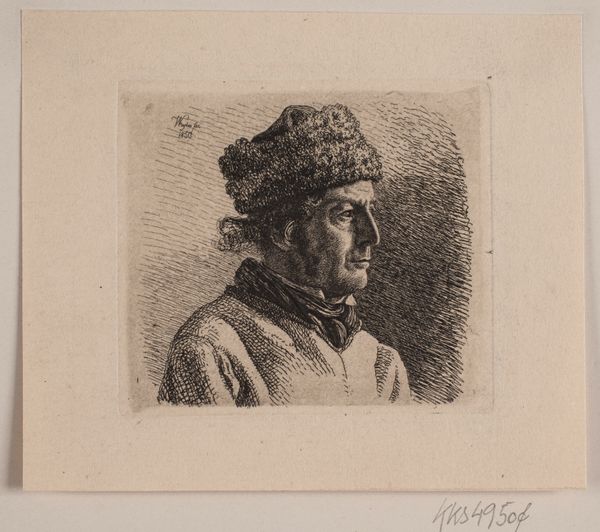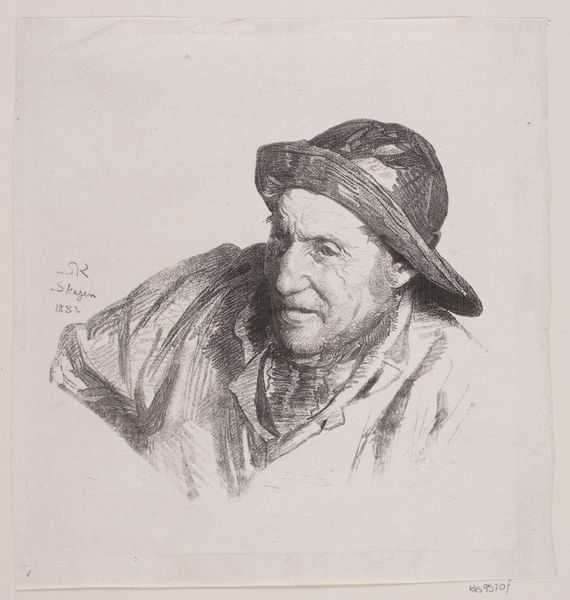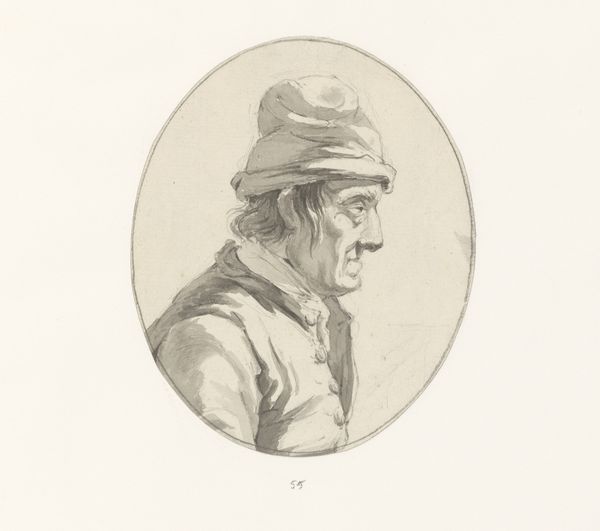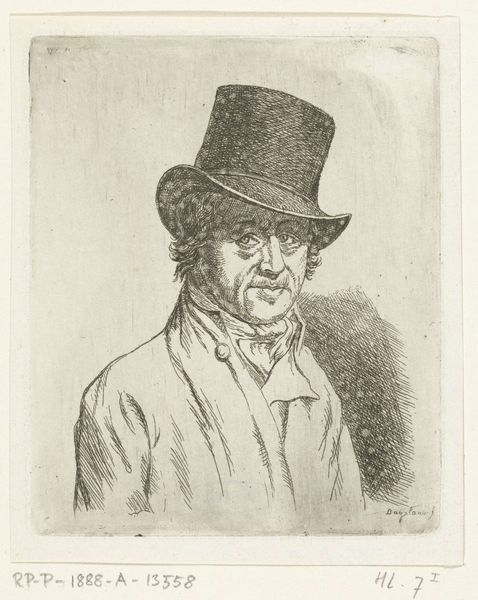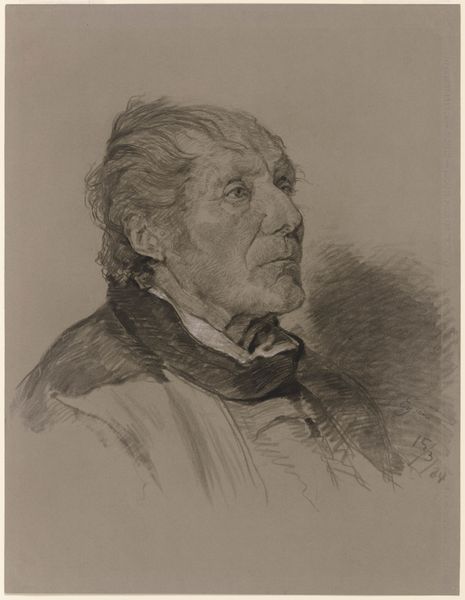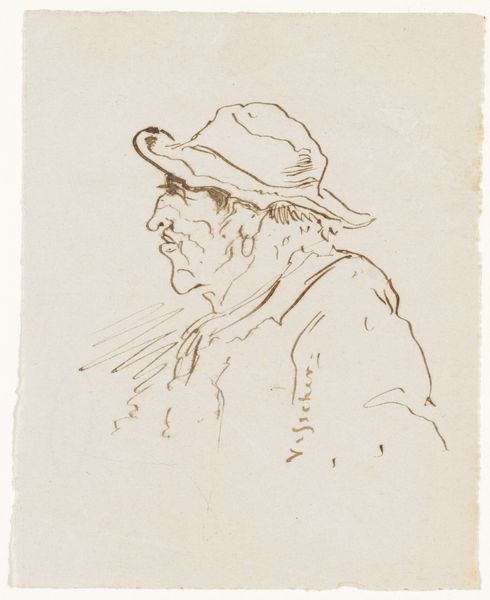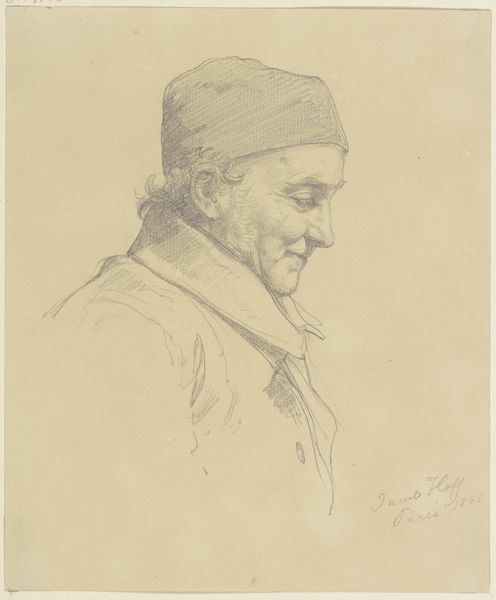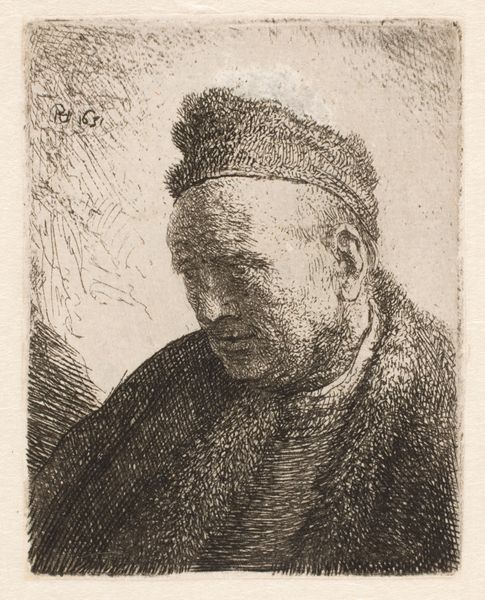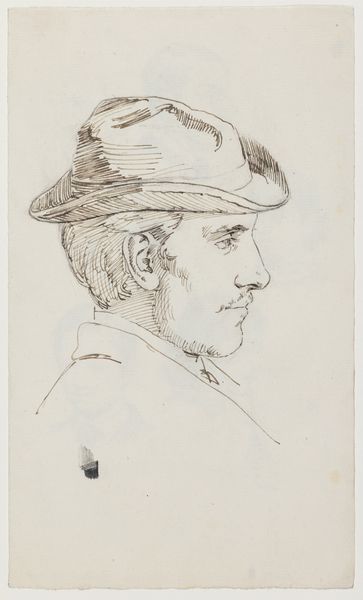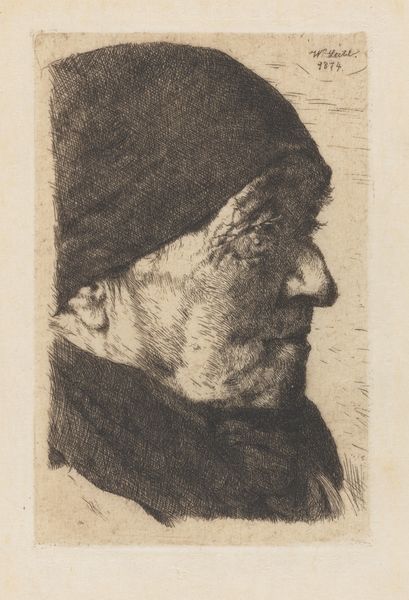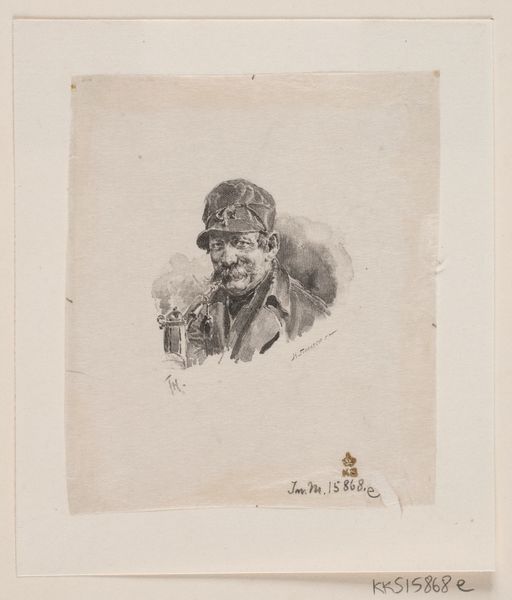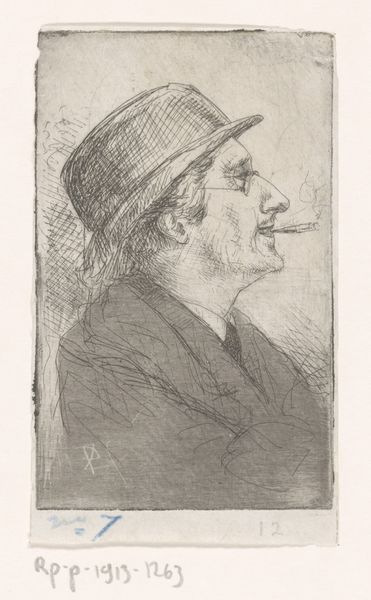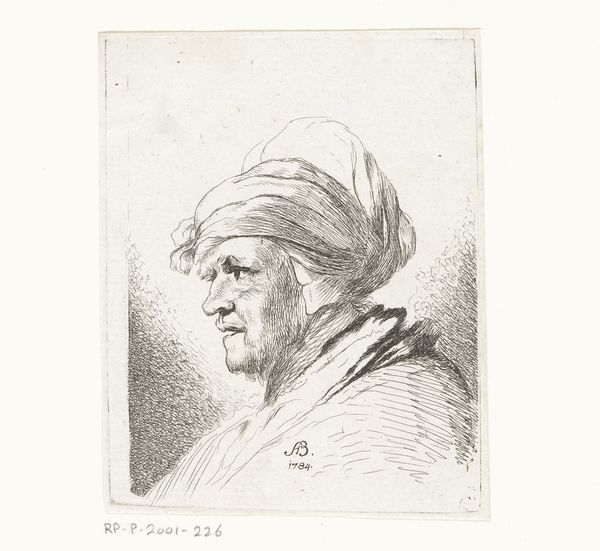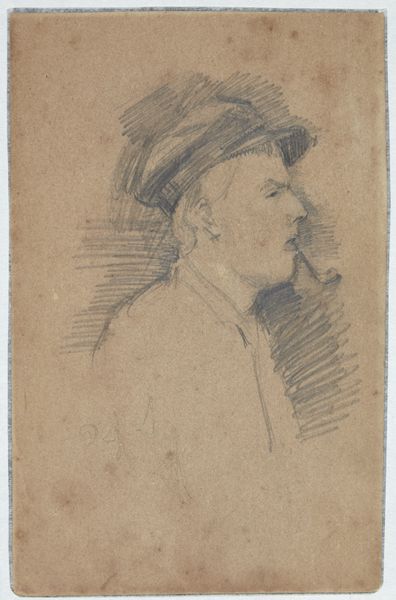
print, etching
#
portrait
# print
#
etching
#
portrait drawing
#
history-painting
#
realism
Dimensions: 73 mm (height) x 82 mm (width) (plademaal)
This is a portrait of Per Johansen, made in 1850 by Vilhelm Kyhn. It's an etching, a printmaking process where acid is used to cut into a metal plate, which is then inked and pressed onto paper. The material influence is evident in the fine lines and delicate details achieved through the etching process. The lines create texture and shading, bringing Johansen's face and clothing to life. The process involves carefully coating a metal plate with a waxy, acid-resistant substance, then drawing an image through the wax, exposing the metal. The plate is then submerged in acid, which eats away at the exposed lines. The longer the plate sits in the acid, the deeper the lines become. The etching technique itself, as with other forms of printmaking, is related to wider issues of labor, politics, and consumption. The image is a result of Kyhn's skilled labor, highlighting his technical ability to capture Johansen's likeness, in a way that allows for the work to be reproduced and distributed. By focusing on materials and making, we gain a deeper understanding of the artwork, blurring the lines between fine art and craft, and enhancing our appreciation.
Comments
No comments
Be the first to comment and join the conversation on the ultimate creative platform.
